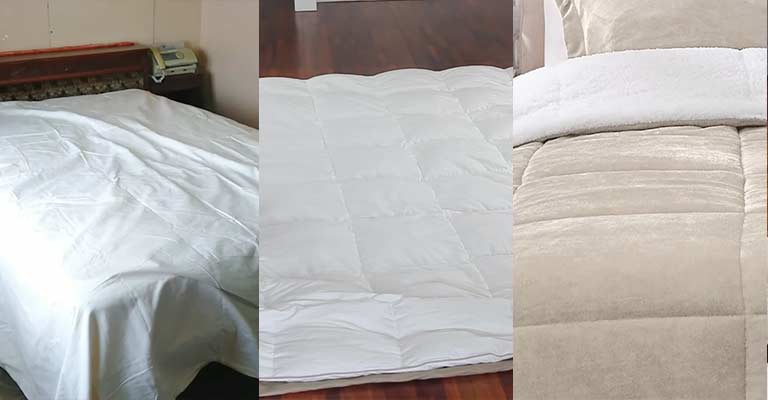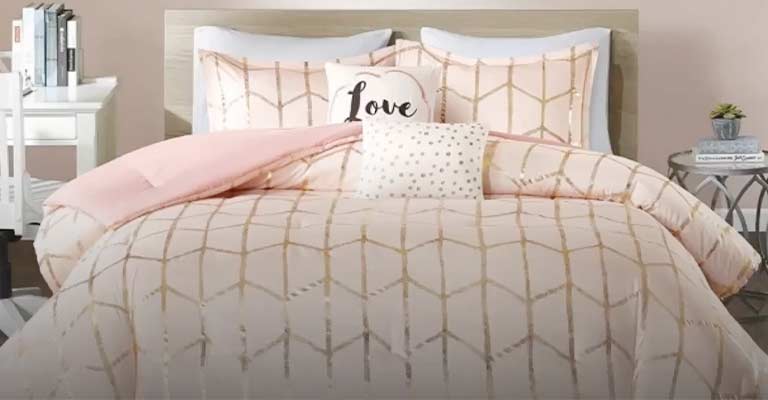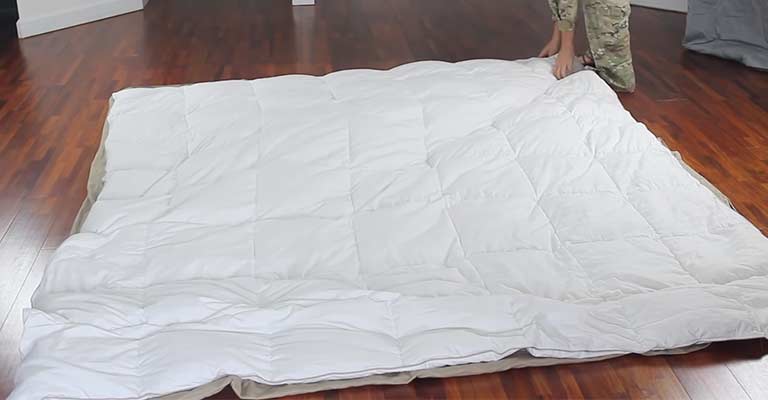Duvet covers and comforters differ. A duvet cover, much like a pillowcase, encases a duvet insert, safeguarding it from excessive dirt. Certain covers utilize ties, buttons, zippers, or clips for attachment to the insert.
Is an insert needed for a duvet cover? A duvet cover without an insert can provide a lightweight, breathable option during warmer months when duvet inserts are meant to provide warmth.
While not strictly necessary, a duvet cover serves to shield the duvet from dirt or damage, influencing the overall appearance and texture of the bed’s top surface.
Do Duvet Covers Need Inserts?
Yes, a duvet cover typically needs an insert. A duvet cover is a protective fabric covering those fits over a duvet, which is a soft, flat bag filled with down, feathers, or a synthetic alternative.
The duvet insert provides warmth, while the duvet cover serves as a protective and decorative outer layer.
When using a duvet cover, you insert the duvet into the cover and then secure it with closures like buttons, zippers, or ties. This not only protects the duvet but also allows you to change the look of your bedding easily.
The duvet insert is essential for providing insulation and warmth, while the cover is more for aesthetics and keeping the insert clean.
How Are Duvets Filled?
Duvets get stuffed with either down or down alternative. Down means feathers from ducks or geese, and these feathers usually come from the soft part under the bird’s belly.
It’s what keeps them warm, but like everything else, there’s good and not-so-good quality.
Some brands go for a fancier vibe by using responsibly sourced, hypoallergenic white duck down for the outer part of the inserts and regular feathers for the inside.
Now, if you’re not into real down, there’s this thing called down alternative. It’s often made of microfiber and aims to give you a similar experience to down.
But not all synthetic options are equal, so it’s smart to dig into some info before you make a purchase.
Duvet Vs. Duvet Cover Vs. Comforter

Duvet, duvet cover, and comforter may sound similar, but they’re different pieces in the bedding puzzle. Let’s dive into the details to clear things up.
What’s A Comforter?
Think of a comforter as the fancy layer on top of your bed that adds color and style. Similar to a duvet insert, it has an outer shell and some fluffy stuff inside.
But unlike a duvet insert, a comforter’s outer shell is designed to look like a duvet cover. Because it combines these two jobs, it’s thinner and sits flatter on your bed compared to a duvet and duvet insert combo.
Comforters usually come in lightweight or midweight options, while duvets have a wider range of weights. If you want to tweak the heaviness of your bed blanket, you can do that with a duvet insert.
Because comforters are slimmer than duvets, they often team up with top sheets or extra quilts for styling.
What’s A Comforter Cover?
Now, comforters don’t necessarily need covers. But if you’re keen on giving your comforter extra protection or changing up your bed’s look, you can use a duvet cover to wrap it up.
What’s A Duvet Cover?

A duvet cover is like the fancy outer layer designed to hug your duvet. When you hit the hay, you’re snuggling with the duvet cover, not the duvet itself.
They’re great for spicing up your bed’s appearance and feel, and they also offer extra warmth and softness. Plus, they play superhero by safeguarding your duvet from stains and tears.
A duvet is like a super comfy blanket designed to keep you just right in terms of temperature. It’s a fluffy layer with an outer shell that gets filled with natural or synthetic stuff, like down feathers or alternatives.
The fancy term “duvet” actually comes from the French word for down. Typically, duvets are made by sewing together two pieces of fabric and stuffing them with filler material.
Traditional ones are filled with duck or goose feathers, but nowadays, you’ve got lots of top-notch microfiber choices too.
No matter what fills them, duvets are all about being soft and plush while keeping you snug during chilly seasons. They also come in different weights to suit various temperatures and snoozing preferences.
The Easy Way to Put on a Duvet Cover
If you’ve ever wondered how to put on a duvet cover without it turning into a wrestling match, fret not! We’ve got the easiest method to make your bed look like it was styled by a pro.
Keep reading to get the lowdown on duvets vs. comforters and follow these straightforward steps (or watch the video if that’s more your style). We’re also tackling some of your burning questions about duvet inserts and covers.
What You’ll Need:
- Duvet cover
- Duvet insert
- Bed
- Optional: Duvet clips
Step 1: Lay the Cover on the Bed
Flip the duvet cover inside out and lay it flat on the bed, making sure the opening is at the foot of the bed. (Don’t forget to give it a wash before this step!)
Step 2: Place the Insert
Place your duvet insert on top of the duvet cover, smoothing it out as much as possible for the next step.
Step 3: Roll the Cover and Insert
Starting from the head of the bed, roll both the duvet cover and insert towards the foot of the bed, trying to keep them together.
Step 4: Close the Bundle
Once you reach the end of the bed, flip the duvet cover opening around both sides of the bundle (like a sandwich baggie). Button, tie, or zip the duvet cover shut. Duvet clips can be handy to keep the insert in place at the corners.
Step 5: Unroll the Cover
Roll the bundle back towards the head of the bed and fluff it up for that extra comfy feel. Sweet dreams await!
Frequently Asked Questions
Is A Duvet A Blanket?
Absolutely! A duvet is like a cozy, blanket-like layer meant to keep you comfy throughout the night. Duvet inserts, the ones filled with either down or down alternatives, are quilted for that extra touch.
Can A Comforter Be Used As A Duvet?
Sure thing! You can use a comforter as a duvet, but watch out for size differences. Toss your comforter into a duvet cover, let it play the role of a duvet insert, but be sure to measure right for a seamless fit.
How Often Should You Wash A Duvet Cover?
Generally, it’s a weekly affair for your duvet cover. If you’re rocking a flat top sheet between you and the duvet cover, every two weeks is cool. Of course, life happens — if there are spills, stains, or pet hair, it might need a bit more TLC.
How Often Should You Change Your Duvet?
Experts suggest a duvet switch every two to five years. Give it some love and proper care, and it might stick around longer.
Using a duvet cover is like armor, protecting against stains, dust, and those pesky dust mites, making your duvet last longer.
Should I Buy A Duvet One Size Bigger?
For that dreamy, fluffy look, aim for a duvet about 12 inches longer and 16 inches wider than your bed. If you want a sleek, flat vibe, keep both the duvet and insert in the same size.
What’s The Benefit Of A Duvet Cover Vs. A Comforter?
Duvet covers are like superheroes, adding an extra layer of protection. With a duvet, you only swap out the cover in direct contact with your skin and bed.
Comforters, on the other hand, might need more washing since they’re cozying up directly to your skin. Some folks throw in a flat sheet for an extra layer, avoiding direct comforter-skin contact.
Can I Put A Blanket In A Duvet Cover?
Absolutely! Stuff a comforter or blanket into your duvet cover. Just be ready for a bit of shuffling and adjusting, as they might not be a perfect match in size. If that doesn’t bother you, go ahead and use your regular blanket inside the cover.
Can I Use A Duvet Cover Without An Insert?
In a hurry, feeling the heat, or your duvet insert is in the wash? No worries! You can totally use a duvet cover by itself. It might not be as fluffy or cozy, but it’ll get the job done.







